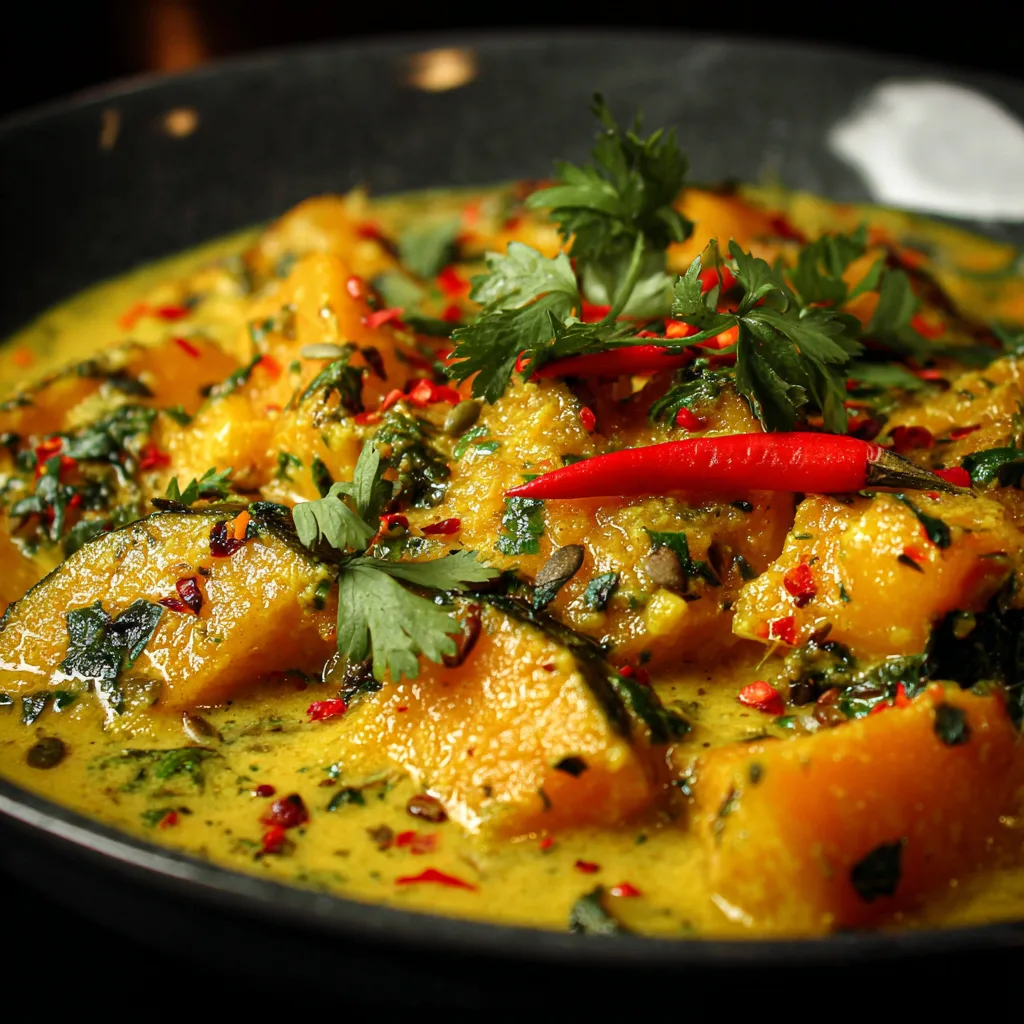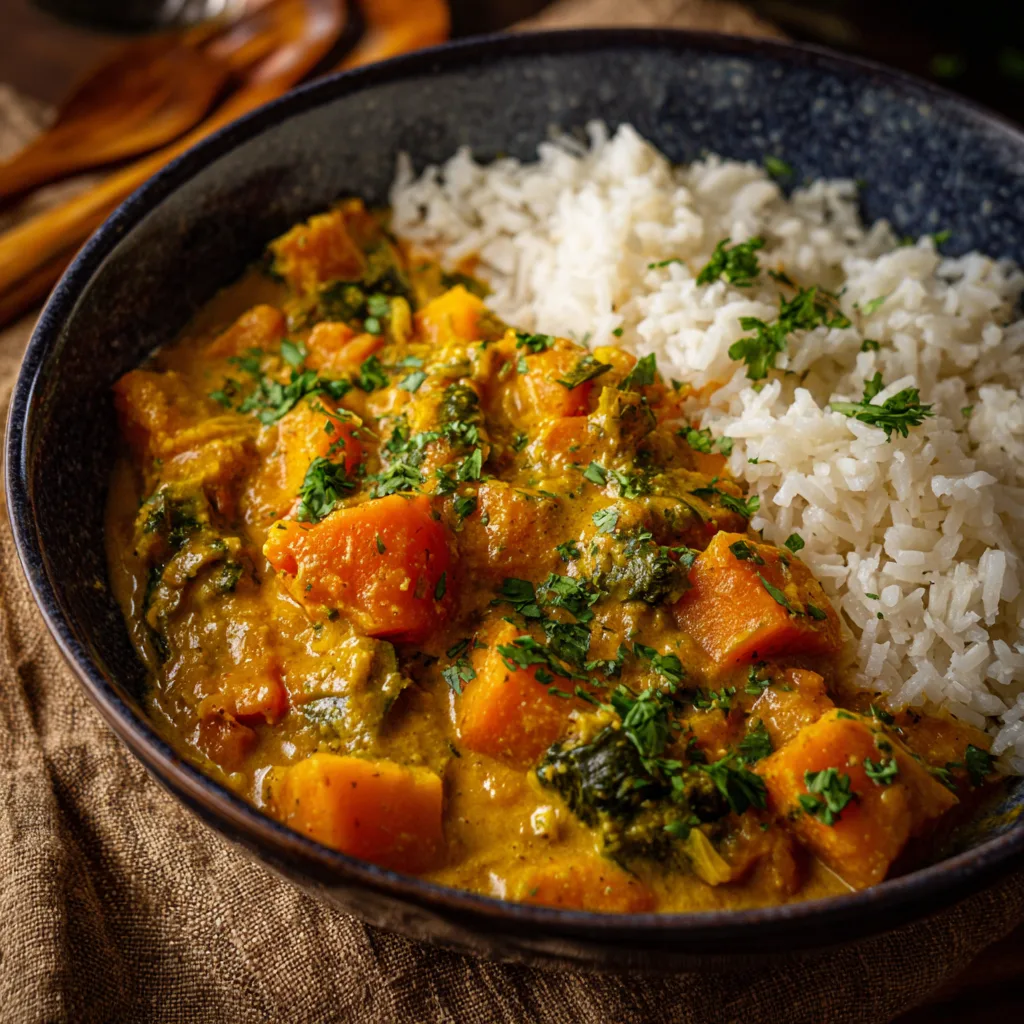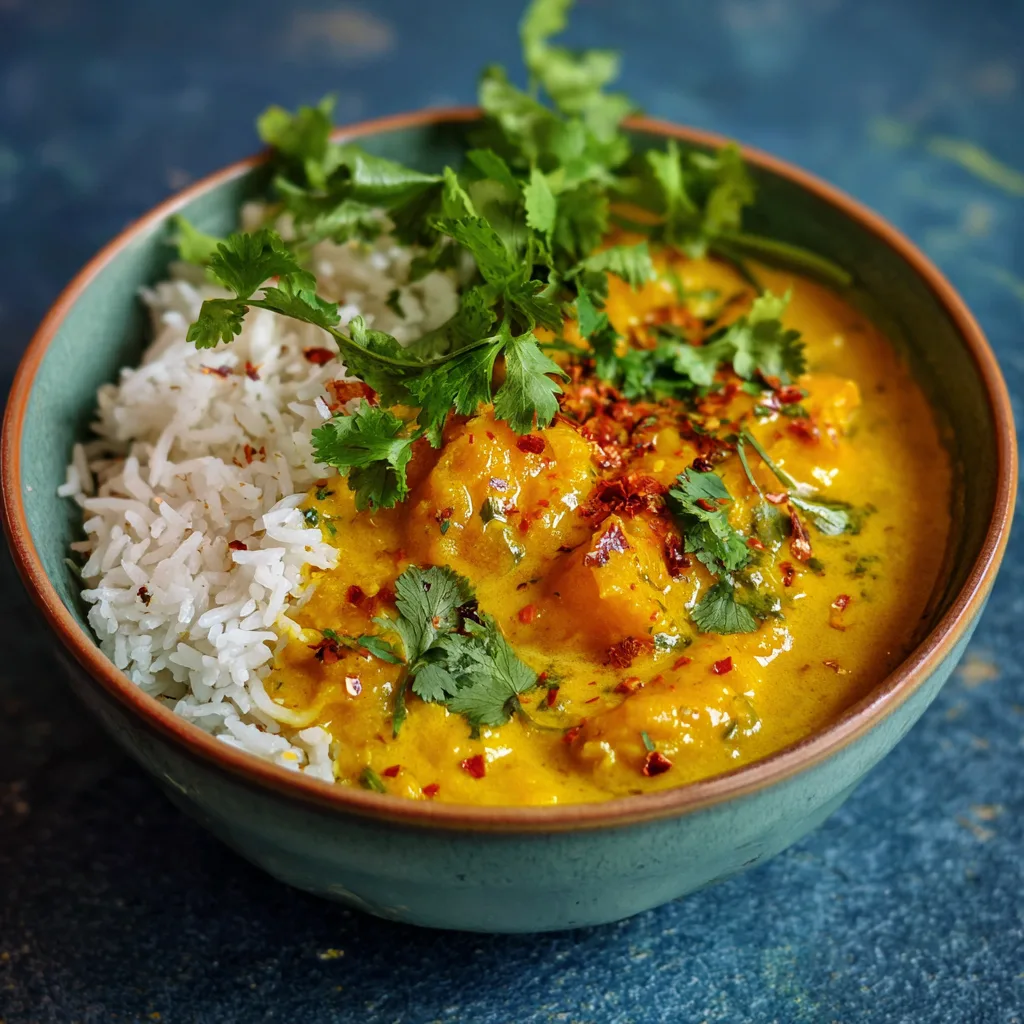Simple Creamy Pumpkin Curry
Pumpkin curry is a delightful, comforting dish, perfect for autumn evenings or any time you crave a warm, flavorful meal. This recipe focuses on simplicity and accessibility, delivering a rich, creamy texture and a delicious balance of sweet and savory flavors. It’s easily adaptable to different dietary needs and spice preferences, making it a versatile addition to your cooking repertoire.
The Magic of Pumpkin Curry: Flavor Profile and Benefits
Pumpkin’s natural sweetness pairs beautifully with the aromatic spices typically found in curry. Coconut milk adds creaminess and richness, while ingredients like ginger, garlic, and chili provide depth and warmth. The result is a complex and satisfying flavor profile that appeals to a wide range of palates.
Beyond its delicious taste, pumpkin offers nutritional benefits. It’s a good source of vitamins A and C, as well as fiber. This makes pumpkin curry not only a treat for the taste buds but also a nourishing meal. You can also tailor the vegetables used to further improve nutritional value.
Crafting the Perfect Creamy Pumpkin Curry: A Step-by-Step Guide
This recipe breaks down the process into manageable steps, ensuring even beginner cooks can achieve delicious results.
Gathering Your Ingredients
Before you start, ensure you have all your ingredients ready. This streamlined process avoids any mid-cooking scrambling. You’ll need:
- 1 tbsp olive or coconut oil
- 1 onion, chopped
- 2 cloves garlic, minced
- 1 inch ginger, grated
- 1 red bell pepper, chopped
- 1 (15 oz) can pumpkin puree (not pumpkin pie filling)
- 1 (13.5 oz) can coconut milk
- 1-2 tbsp red curry paste (adjust to your spice preference)
- 1 tsp turmeric powder
- ½ tsp cumin powder
- ½ tsp coriander powder
- ½ tsp garam masala
- Salt and pepper to taste
- 1 cup vegetable broth (optional, for thinning)
- Fresh cilantro, chopped (for garnish)
- Cooked rice or naan bread, for serving
- 1 can (15 oz) chickpeas, drained and rinsed (optional, for added protein)
- 1 cup spinach or kale (optional, for added nutrients)
The Cooking Process: Building Layers of Flavor
1. Sauté the Aromatics: Heat the oil in a large pot or Dutch oven over medium heat. Add the chopped onion and cook until softened, about 5 minutes. Add the minced garlic and grated ginger and cook for another minute until fragrant. Be careful not to burn the garlic.
2. Add the Bell Pepper: Add the chopped red bell pepper to the pot and cook until slightly softened, about 3-5 minutes.
3. Incorporate the Curry Paste and Spices: Stir in the red curry paste, turmeric powder, cumin powder, coriander powder, and garam masala. Cook for 1-2 minutes, stirring constantly, to toast the spices and release their aroma. This step is crucial for developing the depth of flavor in the curry.
4. Introduce the Pumpkin and Coconut Milk: Pour in the pumpkin puree and coconut milk. Stir well to combine all ingredients. If the curry seems too thick, add the vegetable broth to reach your desired consistency.
5. Simmer and Season: Bring the curry to a simmer, then reduce the heat to low, cover, and cook for at least 15-20 minutes, or up to 30 minutes, to allow the flavors to meld together. Season with salt and pepper to taste. Adjust the amount of curry paste based on your spice preference.
6. Add Optional Ingredients (if using): If you’re adding chickpeas or spinach/kale, stir them into the curry during the last 5-10 minutes of cooking time. This allows them to heat through without becoming overcooked.
7. Serve and Garnish: Serve the pumpkin curry hot over cooked rice or with naan bread. Garnish with fresh cilantro before serving.
Tips for Success: Elevating Your Pumpkin Curry
- Spice Level Control: Start with a smaller amount of red curry paste and add more to taste. Remember, you can always add more spice, but it’s difficult to take it away.
- Pumpkin Puree Choice: Use pure pumpkin puree, not pumpkin pie filling, which contains added sugars and spices that will alter the flavor of the curry.
- Coconut Milk Selection: Full-fat coconut milk will result in a richer, creamier curry. Light coconut milk can be used, but the texture will be less decadent.
- Blending for Smoothness: For an extra smooth curry, you can use an immersion blender to blend the curry before serving. Be cautious when blending hot liquids.
- Make Ahead: Pumpkin curry can be made ahead of time and stored in the refrigerator for up to 3 days. The flavors will actually deepen as it sits.
Variations and Adaptations: Customize Your Curry
One of the great things about pumpkin curry is its versatility. Here are some ideas for customizing the recipe to suit your preferences and dietary needs:
Vegan Pumpkin Curry
This recipe is naturally vegan. Just ensure that your red curry paste is also vegan, as some brands may contain fish sauce.
Gluten-Free Pumpkin Curry
This recipe is gluten-free, but always double-check the labels of your curry paste and other ingredients to be sure.
Adding Protein
In addition to chickpeas, you can add other sources of protein to your pumpkin curry, such as:
- Tofu (cubed and pan-fried or baked)
- Lentils (cooked separately and added to the curry)
- Chicken or shrimp (cooked separately and added to the curry – adjust cooking time as needed)
Vegetable Variations
Feel free to experiment with different vegetables in your pumpkin curry. Some good options include:
- Sweet potatoes
- Cauliflower
- Broccoli
- Green beans
- Peas
Spice Adjustments
Adjust the spices to your liking. If you prefer a milder curry, reduce the amount of red curry paste. For a spicier curry, add a pinch of cayenne pepper or a chopped chili pepper.
Serving Suggestions and Accompaniments: Completing the Meal
Pumpkin curry is a delicious and satisfying meal on its own, but it can also be enhanced with the right accompaniments.
Classic Pairings
- Rice: Steamed jasmine rice or basmati rice are classic choices for serving with curry.
- Naan Bread: Warm naan bread is perfect for scooping up the creamy sauce.
Side Dishes
- Raita: A cooling yogurt-based sauce with cucumber and mint can balance the spiciness of the curry.
- Mango Chutney: The sweet and tangy flavor of mango chutney complements the curry beautifully.
- Pickled Vegetables: Pickled vegetables, such as cauliflower or carrots, can add a crunchy and acidic element to the meal.
Drink Pairings
- Light-Bodied White Wine: A crisp white wine, such as Riesling or Pinot Grigio, can pair well with the sweetness and spice of the curry.
- Indian Beer: A light and refreshing Indian beer, such as Kingfisher or Taj Mahal, is a classic pairing with curry.
- Iced Tea: Unsweetened iced tea can be a refreshing non-alcoholic option.
Frequently Asked Questions (FAQ)
Can I use fresh pumpkin instead of canned pumpkin puree?
Yes, you can. You’ll need about 2 cups of cooked and pureed fresh pumpkin. Roast or steam the pumpkin until tender, then puree it in a food processor or blender until smooth.
How can I make this curry spicier?
Add more red curry paste, a pinch of cayenne pepper, or a chopped chili pepper. You can also add a few drops of chili oil.
Can I freeze pumpkin curry?
Yes, pumpkin curry freezes well. Allow it to cool completely before transferring it to an airtight container. It can be stored in the freezer for up to 3 months. Thaw overnight in the refrigerator before reheating.
What if my curry is too thick?
Add more vegetable broth or water to thin it out.
What if my curry is too thin?
Simmer it uncovered for a longer period of time to allow some of the liquid to evaporate. You can also add a cornstarch slurry (1 tablespoon cornstarch mixed with 2 tablespoons water) to thicken it.
Can I use a different type of curry paste?
Yes, you can experiment with different types of curry paste, such as green curry paste or yellow curry paste. Keep in mind that the flavor profile will be different.
Is pumpkin curry healthy?
Pumpkin curry can be a healthy meal, especially when made with wholesome ingredients and portion control. Pumpkin is a good source of vitamins and fiber, and the vegetables and spices in the curry offer additional nutrients. However, coconut milk is high in fat, so use it in moderation.
Can I add lime juice to brighten the flavors?
Yes, a squeeze of lime juice at the end can add a nice brightness to the curry.




